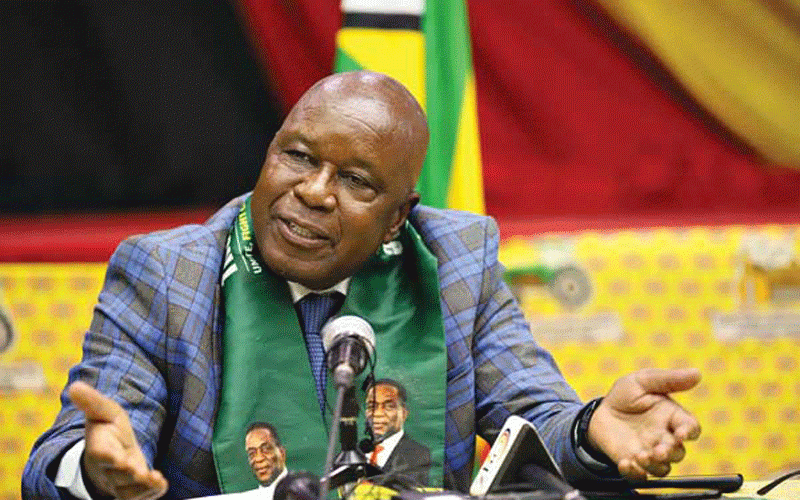
ALMOST a year after government ordered nine diamond mining companies to stop their operations in Chiadzwa, the future of an area once regarded as the panacea for Zimbabwe’s economic crisis remains uncertain.
BY VENERANDA LANGA
the future of poor villagers of Chiadzwa has been destroyed and the area now resembles a ghost town.
The move to amalgamate the diamond mining companies followed concerns that they were not remitting revenue to government.
President Robert Mugabe last year claimed the country could have lost $15 billion in illicit diamond deals as he tried to justify the crippling directive.
A visit last week to the newly-formed government-owned entity — the Zimbabwe Consolidated Diamond Mining Company (ZCDC) — by the Daniel Shumba-led Parliamentary Portfolio Committee on Mines and Energy was a rude awakening for legislators.
The area, once a hive of activity, is now deserted, with police officers more visible than miners.
There was no sign of any mining activity at most concessions, with MPs being greeted by abandoned mining equipment, houses and offices left by the mining companies.
- Chamisa under fire over US$120K donation
- Mavhunga puts DeMbare into Chibuku quarterfinals
- Pension funds bet on Cabora Bassa oilfields
- Councils defy govt fire tender directive
Keep Reading
The only visible forms of life around the abandoned mines were chirping birds and cattle drinking dirty water from huge pits left after mining activities ceased.
Desperate-looking villagers that have not yet been relocated to pave way for mining activities could also be seen coming out of their tiny dilapidated dwellings.
Mines ministry secretary Francis Gudyanga told MPs during the tour that the concessions were deserted because ZCDC was only mining on two locations formerly owned by the Diamond Mining Company (DMC) and Marange Resources.
Sites formerly owned by Mbada, Anjin and Jinan have been deserted.
The three companies have taken government to court challenging the consolidation of the mining firms.
“Mbanda, Anjin and Jinan took government to court, but there were no legal challenges in Marange and DMC, and there were discussions on the use of DMC equipment, and similar discussions on the use of Chimanimani and DTZ-OZGEO equipment, of which we will soon conclude,” Gudyanga said.
“Government won and they appealed to the Constitutional Court where the matter is still pending, and so we are unable to operate on these mines, resulting in the volume of diamond mining in Chiadzwa becoming much less than that which used to be done by former companies.”
Gudyanga said Mbada equipment was taken over and sold through auction. It was bought by ZCDC and it is the equipment that MPs observed the company using for its mining activities.
He said the Chinese government asked Jinan and Anjin to withdraw the lawsuits to avoid soiling the good relationships between Zimbabwe and China. The government is now engaging the two firms on the removal of their equipment from Chiadzwa.
Three former diamond mining companies are contesting a forensic audit that government ordered.
“We had to invoke the powers of the Auditor General. ZCDC has resumed operations but we are constrained because at the moment we are operating from one or two mines,” Gudyanga said.
“Other challenges have been the laid-off employees, and the minister of Mines Walter Chidhakwa made a commitment that all employees of former companies would be appointed in normal recruitment processes.”
Information minister Christopher Mushowe, who is also MP for the area, said ZCDC should seriously consider the plight of the former workers who were now suffering.
Mushowe accused the displaced companies of ignoring the plight of the Chiadzwa community, saying they failed to even build a bridge or roads in the area.
“Even smaller mining companies like Unki Mine were able to build schools and teachers’ houses, but in Marange grade ones walk 6km to the next school,” Mushowe said.
ZCDC acting CEO Ridge Nyashanu said they were discussing a deal to buy DTZ-OZGEO assets and commence mining.
“Our production level is not what people expect because we inherited equipment that worked for many years and required rebuilding so that our plant is up to standard,” he said.
“We also hire equipment and it is expensive, but we have plans to acquire our own equipment.
“Other challenges were that Marange did not have water at its processing plant yet water is key in diamond mining, but we built a 12km pipeline from Save River.”
ZCDC is saddled with legacy debts running into millions of dollars.
A total of 850 people are employed by ZCDC. meanwhile, the mining of alluvial diamonds is now minimal as they have almost been exhausted.
“Some of the challenges are deepseated alluvials that are being eroded and some are moving down river channels into Mozambique because Save River flows into Mozambique,” Nyashanu said.
However, Gudyanga assured the committee that Chiadzwa still had diamond reserves, although he failed to convince MPs that his evidence was recent and done after thorough exploration as he seemed to rely on information supplied several decades ago by De Beers.
The mining methods used by ZCDC seemed archaic, with Nyashanu telling the committee that they had to remove seven tonnes of soil to get one tonne of ore.
“Before ZCDC was formed there was an initial projection of 6,9 million carats per year but by 2015 production had gone down to 2,3 million carats,” he said.
“We revived our projection in June to production levels of 1,3 million carats, and we produced 953 818 carats.”
On the prices of diamonds, Nyashanu painted a gloomy picture where Zimbabwe’s diamonds seemed to have been sold for a song by previous companies mining in Chiadzwa.
Anjin’s average price per carat was $44, DMC ($46), DTZ-OZGEO ($49), with Anjin the highest at $89 per carat, Marange $67, and Mbada at a dismal $23,94 per carat.
It was not clear if the low diamond prices were due to illicit practices or mining of industrial low quality diamonds, but Nyashanu told MPs that Mbada had some of the best quality gems.
He said ZMDC bought equipment worth $7, 5 million through a loan from the Reserve Bank of Zimbabwe.
The company also bought equipment such as dump trucks, dosers, and front-end loaders from Belarus through another loan facility of $36 million.
Zimbabwe Environmental Law Association taxation expert Mukasiri Sibanda said ZCDC would not be profitable if it depended on loans.
He said state-owned enterprises had a history of failure in Zimbabwe, adding that ZCDC as a new kid on the block had legacy issues which needed to be resolved.
Sibanda said Nyashanu’s claims that ZCDC would construct a university in Marange as part of corporate social responsibility were too good to be true given their very low production levels.
During the visit to ZCDC, MPs complained that they only saw large tonnes of sand being lifted with no trace of diamonds.
Shumba said the problem was that ZCDC was operating on guesswork with no exploration being done on the site.
About 20 000 litres of diesel per day are used to power generators used by ZCDC in their mining activities in Chiadzwa.
Gudyanga said Zesa was refusing to connect power because of huge debts left by the former mining companies.











